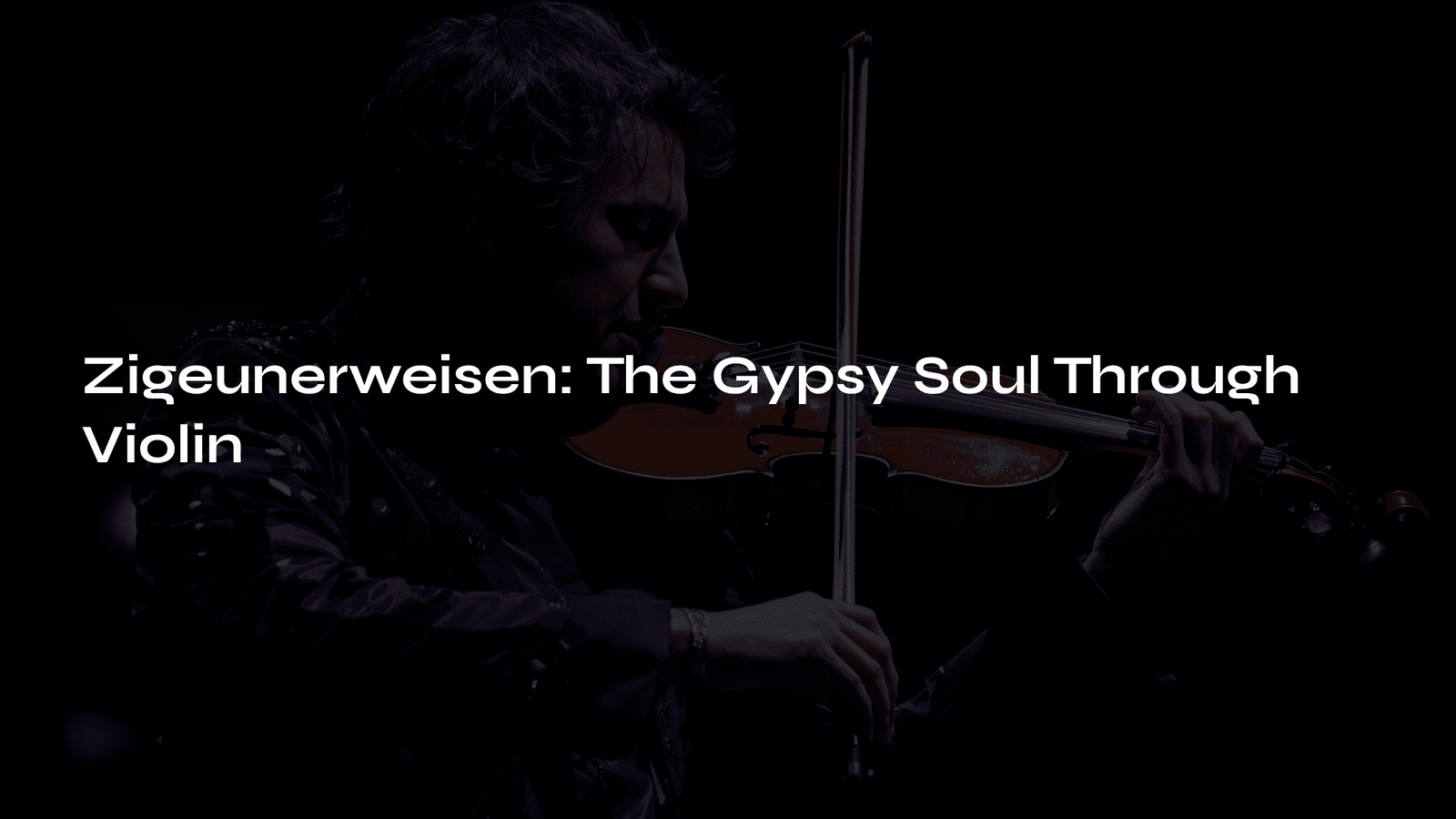Table of Contents

Encountering the Melodies of Wanderlust
On an autumn evening, the first notes of a violin pierced through the darkness of the concert hall. Like stars appearing in the night sky, those poignant melodies captured my heart instantly. With each stroke of the violinist’s bow across the strings, it felt as though someone was whispering a tale of sorrow into my ears. That was the moment I first encountered Zigeunerweisen.
This music was not merely a collection of notes. It was a yearning for freedom, a life on the road, and a soul’s journey through deep valleys of emotion. Today, I invite you to journey with me into the magical world of this extraordinary music.

Sarasate and the Birth of Zigeunerweisen
Pablo de Sarasate (1844-1908) was a Spanish violin prodigy and composer. Having given his first public performance at the age of seven and entered the Paris Conservatory at twelve, he established himself as one of the greatest violinists of his era.
In 1878, he composed “Zigeunerweisen” (Op. 20), meaning “Gypsy Airs” in German, drawing inspiration from his travels and deep affection for gypsy music. The piece brilliantly incorporates elements from Hungarian and Spanish gypsy melodies, particularly adopting the structure of the Hungarian folk dance Csárdás (with its slow Lassan and fast Friska sections) to perfectly embody the gypsy spirit.
Nineteenth-century Europe was fascinated by gypsy culture, and composers like Liszt and Brahms also created works influenced by gypsy music. However, Sarasate, being an exceptional violinist himself, could push the instrument to its limits, simultaneously expressing both dazzling technique and profound emotion.

Musical Journey: Exploring Four Worlds
Zigeunerweisen is divided into four distinct sections, each capturing different emotions and expressions of gypsy music.
1. Moderato: Prologue of Lament
The first section begins with a majestic and dramatic introduction. Following powerful orchestral chords, the violin enters with a melody that feels like a storyteller addressing the audience. The profound sadness and grief in this section seem to express the nomadic life of gypsies and the hardships they endured. The violin whispers at times and cries out at others, pouring out emotions.
2. Lento: Dreamlike Nostalgia
The second section transitions into a slow, dreamlike atmosphere. Evoking the image of gypsies gathered around a campfire under moonlight, this part carries a sense of longing and nostalgia for homeland. The violin’s sorrowful melody conveys emotions that seem like tears flowing, guiding the audience through valleys of deep feeling.
3. Un poco piu lento: Deepening Grief
The third section slows even further, intensifying the grief and sorrow. The violin’s trembling tone and deep resonance express the gypsies’ hardships and the weight of their lives. This part particularly showcases the rich tones of the violin’s lower strings and vibrato technique, delivering powerful emotions that penetrate the audience’s hearts.
4. Allegro molto vivace: Explosion of Passion
The final section shifts to a completely different mood. This very fast and lively finale represents the gypsies’ festivals, dances, and passion for life. It employs advanced violin techniques including left-hand pizzicato, artificial harmonics, and spiccato, offering a spectacular display of virtuosity. With rhythms reminiscent of galloping horses, this section races toward a climax, providing the audience with an intense catharsis.

Zigeunerweisen in My Heart
When I first heard this piece, I felt as though I could understand the language spoken by the violin. The poignant melody of the Lento section touched something deep within me, like listening to the story of an old friend.
During the Allegro section, I was overwhelmed by the violinist’s breathtaking technique. The music created by fingers flying across strings was as brilliant and intense as fireworks. In that moment, I felt as though I were standing in the middle of a gypsy celebration.
The charm of this piece lies not just in its technical perfection but in its ability to express humanity’s deepest emotions. The harmonious blend of sadness and joy, longing and passion within a single piece mirrors our life journey.

How to Experience Zigeunerweisen More Deeply
For those who wish to appreciate this masterpiece more deeply, here are some tips:
- Compare Interpretations by Different Performers: Listen to world-class violinists like Jascha Heifetz, Itzhak Perlman, and Sarah Chang. The same piece tells completely different stories depending on the performer.
- Feel the Atmosphere of Each Section: Focus on what emotions and stories each of the four sections conveys. Try imagining the scenes painted by the music, as if watching a film.
- Appreciate the Violin Techniques: Pay particular attention to the various violin techniques (pizzicato, harmonics, spiccato, etc.) displayed in the final section. Observing how these techniques enrich the musical expression can be a fascinating experience.
- Understand the Context of Gypsy Music: Listen to authentic gypsy music alongside Zigeunerweisen to compare how Sarasate elevated it to classical music. This provides a deeper appreciation of his artistic transformation.
- Close Your Eyes and Immerse Yourself: Sometimes, setting aside all analysis and simply surrendering to the emotions conveyed by the music is the purest way to experience it.

The Eternal Melody of Wandering
Zigeunerweisen is not merely a violin piece. It is a soul’s cry for freedom and an epic that contains life’s joys and sorrows. Through the violin, Sarasate summons the souls of gypsies and conveys their stories to us.
The reason why many violinists still challenge this piece and countless audiences remain captivated by it lies here. Zigeunerweisen possesses a magical power that resonates with universal human emotions, transcending time and borders.
I invite you to listen to these melodies of wanderlust. Feel what stories the music tells in your heart. Perhaps it will be more than just an appreciation of music—it might become a journey into your own inner self.
Feeling the Vibe? Here’s Another Masterpiece to Enjoy
The Fascinating Story Behind Albinoni’s Adagio in G Minor – ReViewMaster DEN
America Painted in Melodies of Hope: Dvořák’s ‘From the New World’ – ReViewMaster DEN



